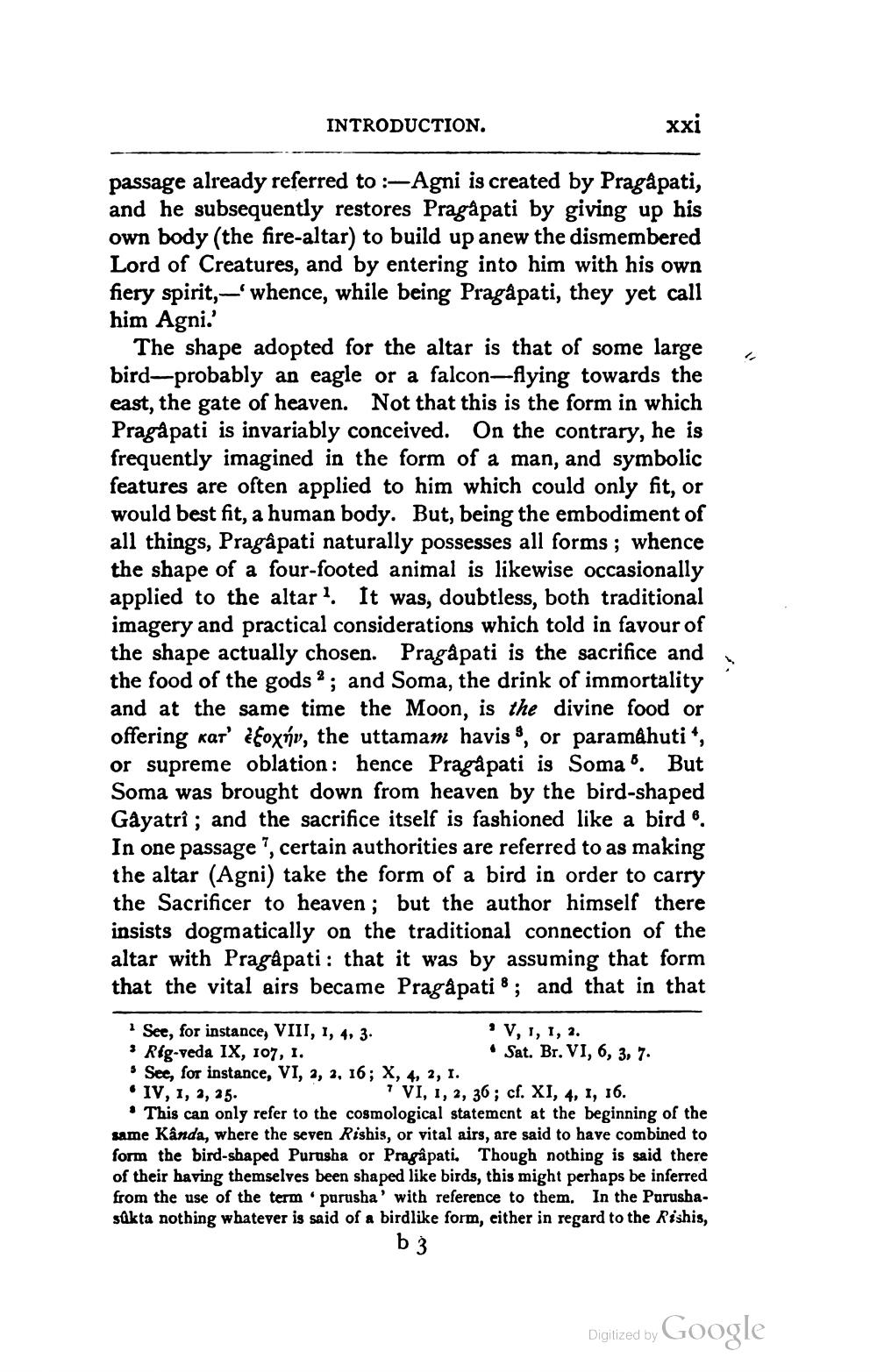________________
INTRODUCTION.
xxi
passage already referred to :-Agni is created by Pragàpati, and he subsequently restores Pragåpati by giving up his own body (the fire-altar) to build up anew the dismembered Lord of Creatures, and by entering into him with his own fiery spirit, —'whence, while being Pragậpati, they yet call him Agni.
The shape adopted for the altar is that of some large bird-probably an eagle or a falcon-flying towards the east, the gate of heaven. Not that this is the form in which Pragapati is invariably conceived. On the contrary, he is frequently imagined in the form of a man, and symbolic features are often applied to him which could only fit, or would best fit, a human body. But, being the embodiment of all things, Pragâpati naturally possesses all forms; whence the shape of a four-footed animal is likewise occasionally applied to the altar! It was, doubtless, both traditional imagery and practical considerations which told in favour of the shape actually chosen. Pragâ pati is the sacrifice and the food of the gods; and Soma, the drink of immortality and at the same time the Moon, is the divine food or offering kar' étoxnv, the uttamam havis $, or paramåhuti, or supreme oblation: hence Pragå pati is Soma. But Soma was brought down from heaven by the bird-shaped Gayatri ; and the sacrifice itself is fashioned like a bird 6. In one passage ?, certain authorities are referred to as making the altar (Agni) take the form of a bird in order to carry the Sacrificer to heaven; but the author himself there insists dogmatically on the traditional connection of the altar with Pragàpati : that it was by assuming that form that the vital airs became Pragapati 8; and that in that
See, for instance, VIII, 1, 4, 3.
IV, 1, 1, 2. • Rég-veda IX, 107, 1.
Sat. Br. VI, 6, 3, 7. . See, for instance, VI, 2, 2, 16; X, 4, 2, 1. • IV, 1, 2, 25.
IVI, 1, 2, 36; cf. XI, 4, 1, 16. • This can only refer to the cosmological statement at the beginning of the same Kanda, where the seven Rishis, or vital airs, are said to have combined to form the bird-shaped Purusha or Pragâpati. Though nothing is said there of their having themselves been shaped like birds, this might perhaps be inferred from the use of the term purusha' with reference to them. In the Purushasakta nothing whatever is said of a birdlike form, either in regard to the Rishis,
b 3
Digitized by Google




